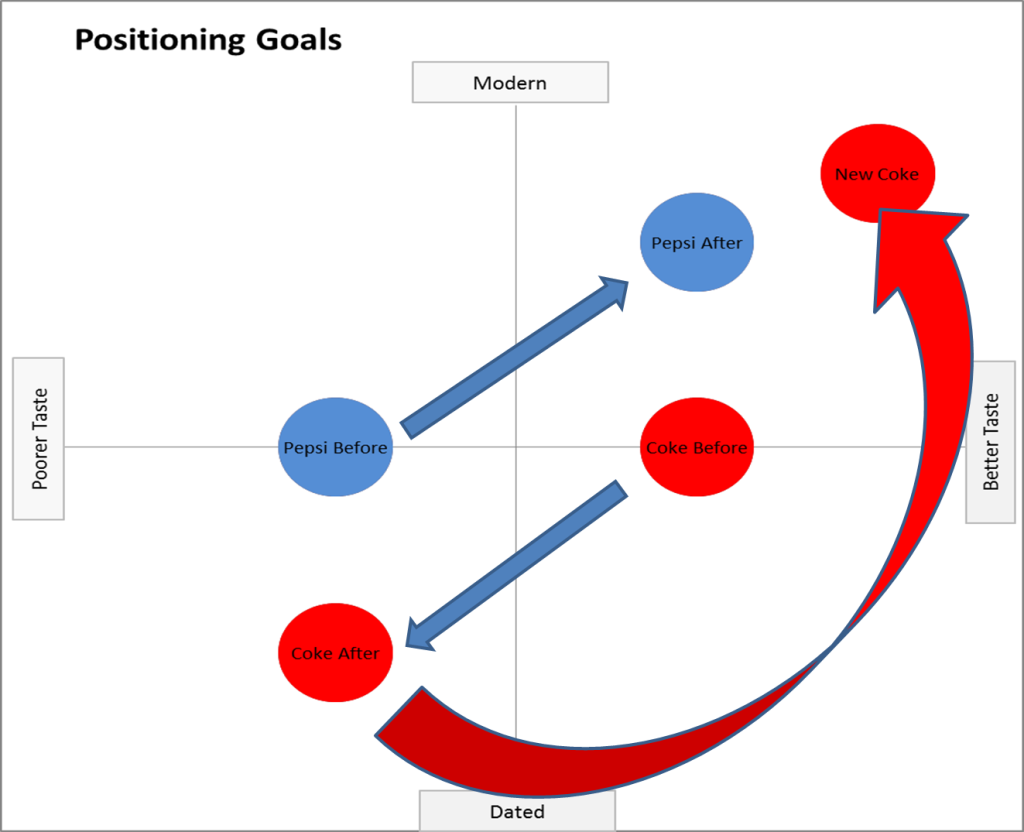Topics
consumer behavior, strategy, competition, new products, role-play exercise
Teaching Notes
This is Part 2 of the New Coke Case Study
This is Part 2 of the New Coke Case Study. It is highly recommended that student groups undertake the New Coke Case Study (Part 1), which sets the marketing environment context for Coke’s decision back in 1985.
While the first part of the New Coke case gets students to role play the decision and to consider what other marketing strategies might have been appropriate at the time, this 2nd part of the case gets students to consider if and how they would launch a new cola product into the marketplace.
Please refer to the New Coke Case Study (Part 1) for more instructions on how to structure the groups if you do not have groups of six students (which are needed for the role play participants).
There is also a collection of useful New Coke and Cola Wars videos on this site as well – and a summary New Coke Case Study video at the bottom of this page.
Review the activity below or download the PDF student worksheet
- Student Worksheet: New Coke Case Study (Part 2)
- Instructor Solutions (Members Only): New Coke Case Study (Part 2) = Solutions
New Coke Case Study (Part 2)
Let’s assume that among the marketing strategy solutions for Coca-Cola in 1985 was the strong consideration of introducing a new cola product (in some form) in the marketplace. As we know, Coca-Cola did in fact reformulate their flagship Coke product and relaunch it in 1985 – but was that the right decision?
Now it’s your turn to determine what would be the best product mix for the Coke brand, given the competitive marketing environment in the soft drink market of 1985.
Recap: Why Coca-Cola Introduced New Coke in 1985
- Coke was being outsold by Pepsi in segments where consumers had a choice of the brands, such as supermarkets,
- Overall Coke’s market share was steadily declining (down from 24.3% in 1980 to 21.7% in 1984) ,
- Coke had increased their advertising and promotional spending from $50m to $200m in recent years. Their $200m promotional budget was 1/3 more than Pepsi’s spend of $150m), but failing to stop Pepsi’s gains in market share,
- Coke was having to resort to conducting aggressive sales promotions and discounting in stores (to reduce the impact of the Pepsi Challenge advertising),
- Coke’s own market research was indicating that “taste” was the main reason for their erosion of market share,
- Pepsi’s “new generation” advertising campaign was designed to position Coke as old and tired and boring,
- Pepsi now had Michael Jackson at the height of his career,
- Coke’s R&D area has developed a new cola formula that was preferred over both Pepsi and existing Coke in blind taste tests,
- Plus the new Coke formula was cheaper to manufacture, which would add up to a $50m pa increase to the bottom line.
The New Coke Strategy
Coca-Cola’s management believed that the introduction of New Coke would completely destroy Pepsi’s competitive strategy. In fact, Pepsi’s own management initially believed that this was a masterstroke by Coke.
Firstly, the New Coke product was to be positioned as new, exciting, modern and young; directly confronting the “Pepsi Generation” campaign and stealing Pepsi’s market positioning.
Secondly, the New Coke product tasted better which would stop the Pepsi Challenge taste-test advertising. In fact, Coke had plans to run their own taste-tests and run their own TV commercials in order to win back lost customers.
Therefore, you can see why Coke’s management was so confident, as they believed that they had boxed Pepsi into a corner and destroyed their competitive strategy, as highlighted in the following perceptual map.
Alternative Product Options to Consider
Your group needs to consider whether if and how Coca-Cola should launch a new product or whether there are better non-product solutions to their competitive battle with Pepsi. Here are the different approaches to a new product to consider and discuss in your groups.
A. Develop a NEW product
- Launch the new product as a replacement for Coke (as they did first) or
- Launch the new product under Coke brand in addition to Coke (as they did later) or
- Launch the new product under a new brand name (as a multi-brand strategy) or
- Slowly change the Coke formula over time to become New Coke (without consumers noticing) or
- Undertake market testing of the new product first (before a full launch)
B. Do NOT develop a new product
- Increase promotional activity and spend
- Increase in-store promotions and discounting
- Increase retailer penetration
- Reposition the Coke brand
- Attempt to reposition Pepsi
- Try something else (your own ideas)
C. Do nothing different
Discussion Questions for New Coke (Part 2)
Note: Remember to discuss these questions in the role play scenario; please see the other New Coke Case Study for participant role descriptions.
- From the above list, what would be the best option for Coke to pursue in 1985?
- If you decided to introduce some form of new product, how would you position the new product relative to both Pepsi and any remaining Coke products?
- If you decided to reposition the Coke brand or Pepsi, outline your positioning goals.
- If you decided NOT to modify the product mix, outline why this approach would be successful given that Coke has already implemented many of these marketing tactics.
New Coke Video Case Study Summary
Related Activities
